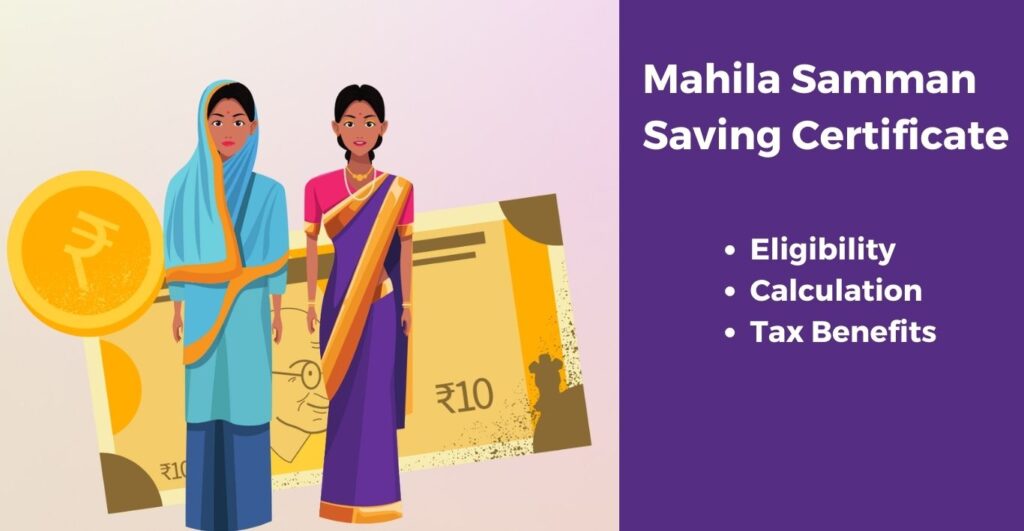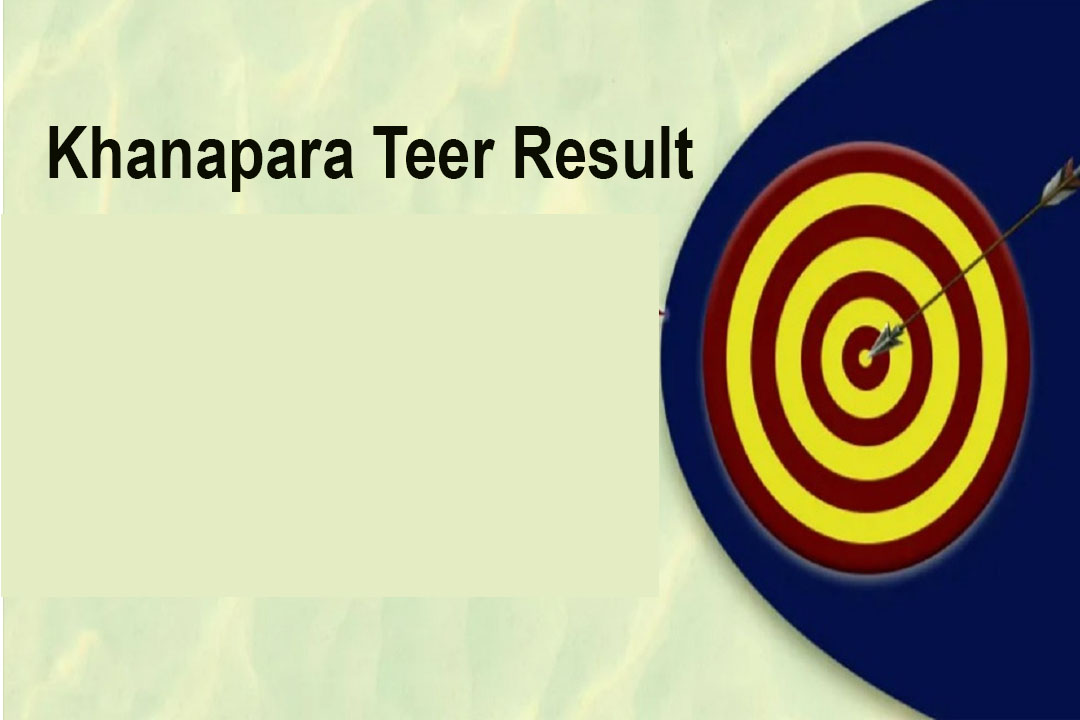The Indian government has introduced a new savings programme, the Mahila Samman Saving Certificate. This programme, which aims to empower women and girls, gives them the chance to invest and grow their savings with enticing interest rates and tax advantages. The Mahila Samman Saving Certificate scheme will be covered in detail in this article, along with the eligibility requirements, application procedure, interest rate, calculation, and comparison to other small savings plans.

Eligibility for the Mahila Samman Saving Certificate
The Mahila Samman Saving Certificate can be opened only in the name of a girl child or a woman. It can be initiated by either a woman herself or the guardian of a minor girl child. This scheme is specifically designed to support women’s financial inclusion and provide them with a secure investment avenue.
How to Apply for a Mahila Samman Saving Certificate
To open a Mahila Samman Saving Certificate account, follow these simple steps:
- Download the ‘Application for purchasing the certificate’ form from the official Indian Post website or visit the nearest Post Office branch to obtain the form.
- Fill out the form with accurate details, including your name, the Post Office address, and specify the account as ‘Mahila Samman Savings Certificate.’
- Provide the required personal details, payment information, and declaration and nomination details as requested.
- Submit the completed form along with the necessary documents, such as KYC documents (Aadhaar card, Voter ID, driving license, PAN card), KYC form for new account holders, and the pay-in-slip for the deposit amount.
- Make the deposit in the Post Office using cash or a cheque.
- Upon completion, you will receive a certificate as proof of your investment in the Mahila Saving scheme.
Features of Mahila Samman Saving Certificate
The Mahila Samman Saving Certificate scheme offers several noteworthy features, including:
Government-Backed Scheme: The Mahila Saving Certificate is a government-backed small savings scheme, ensuring that it carries no credit risk.
Deposit Limits: For this scheme, the minimum deposit is Rs. 1,000, with increments in multiples of 100. The most that can be deposited into one account, or several accounts held by the same account holder, is Rs. 2 lakh. A minimum of three months must have passed since the existing account’s opening date in order to open a new one.
Maturity Period: The Mahila Saving Certificate has a maturity period of two years. At the end of this term, the account holder will receive the maturity amount, which includes the principal deposit and the accrued interest.
Withdrawal Facility: The scheme allows for partial withdrawals. After one year from the account opening date, the account holder can withdraw up to 40% of the account balance.
Interest Rate: The Mahila Saving Certificate offers a fixed interest rate of 7.5% per annum. This rate is significantly higher than that of most bank Fixed Deposits (FDs) and other popular small savings schemes. The interest is credited quarterly and paid at the time of account closure.
Tax benefits: The interest received under the Mahila Saving Certificate Scheme is not subject to Tax Deducted at Source (TDS). The Income Tax Act states that TDS is only necessary when interest from a post office savings plan exceeds Rs. 40,000 in a fiscal year (or Rs. 50,000 for senior citizens). TDS is not deducted from the interest earned in this scheme because it has a maximum investment cap of Rs. 2 lakh for a two-year period and the interest amount does not exceed Rs. 40,000.
Premature Closure: The Mahila Samman Certificate account can be closed before the maturity period of two years in the following situations:
After six months of opening the account without providing any specific reason. In such cases, an interest rate of 5.5% will be applicable.
In cases of extreme compassionate grounds, such as life-threatening diseases of the account holder or the death of the guardian. Relevant documents need to be produced, and the interest will be paid on the principal amount.
Mahila Samman Saving Certificate Calculation
To understand the potential benefits of investing in a Mahila Samman Certificate account, let’s consider an example:
Suppose you invest Rs. 2,00,000 in the scheme, which offers a fixed interest rate of 7.5% per annum. In the first year, you will earn an interest of Rs. 15,000 on the principal amount, and in the second year, the interest will be Rs. 16,125. Thus, by the end of two years, your maturity amount will be Rs. 2,31,125 (Rs. 2,00,000 initial investment + Rs. 31,125 interest).
Comparison with Other Small Savings Schemes
The government has introduced various small savings schemes to cater to the diverse needs of investors. Here’s a comparison of the Mahila Samman with other popular schemes:
PPF vs. Mahila Samman Saving Certificate:
Eligibility: PPF is open to any individual Indian citizen, while the Mahila Samman is exclusively for women and girl children.
Interest Rate: The Mahila Samman Scheme offers a higher interest rate of 7.5% compared to PPF’s 7.1%.
Tenure: PPF has a longer tenure of 15 years, whereas the Mahila Samman Scheme has a two-year term.
Deposit Limit: The Mahila Samman Scheme allows a maximum deposit of Rs. 2 lakh, while the PPF has a maximum limit of Rs. 1.5 lakh.
Premature Withdrawal: The Mahila Samman Scheme permits a partial withdrawal of 40% after one year, while PPF allows partial withdrawals only after seven years.
Tax Benefit: The Mahila Samman Scheme does not offer any tax deduction under Section 80C, whereas PPF investments qualify for deductions under Section 80C.
NSC vs. Mahila Samman Saving Certificate:
Eligibility: NSC is available to any individual, including NRIs, whereas the Mahila Samman Scheme is exclusive to women and girl children.
Interest Rate: The NSC offers a slightly higher interest rate of 7.7% compared to the Mahila Samman Saving Certificate’s 7.5%.
Tenure: NSC has a tenure of 5 years, while the Mahila Samman Scheme has a two-year term.
Deposit Limit: The Mahila Samman Scheme allows a maximum deposit of Rs. 2 lakh, whereas the NSC has no upper limit.
Premature Withdrawal: Similar to the Mahila Samman Scheme, the NSC permits partial withdrawals under certain circumstances.
Tax Benefit: The Mahila Samman Schemedoes not offer any tax deduction under Section 80C, while NSC investments qualify for deductions of up to Rs. 1.5 lakh under Section 80C.
SCSS vs. Mahila Samman Saving Certificate:
Eligibility: SCSS is exclusively for senior citizens aged above 60 years, while the Mahila Samman Saving Certificate is for women and girl children.
Interest Rate: SCSS offers a higher interest rate of 8.2% compared to the Mahila Samman Saving Certificate’s 7.5%.
Tenure: Both SCSS and the Mahila Samman Schemehave a term of 2 years.
Deposit Limit: The Mahila Samman Scheme allows a maximum deposit of Rs. 2 lakh, whereas the SCSS has a maximum limit of Rs. 30 lakh.
Premature Withdrawal: The Mahila Samman Schemepermits a partial withdrawal of 40% after one year, while SCSS can be closed at any time.
Tax Benefit: The Mahila Samman Scheme does not offer any tax deduction under Section 80C, while SCSS investments qualify for deductions of up to Rs. 1.5 lakh under Section 80C.
SSY vs. Mahila Samman Saving Certificate:
Eligibility: SSY can only be opened in the name of a girl child before she attains 10 years, while the Mahila Samman Scheme is open to women and girl children.
Interest Rate: SSY offers a slightly higher interest rate of 8.0% compared to the Mahila Samman Saving Certificate’s 7.5%.
Tenure: SSY has a much longer tenure of 21 years from the account opening or when the girl child attains 18 years, while the Mahila Samman Saving Certificate has a two-year term.
Deposit Limit: The Mahila Samman Schemeallows a maximum deposit of Rs. 2 lakh, whereas the SSY has a maximum limit of Rs. 1.5 lakh.
Premature Withdrawal: The Mahila Samman Schemepermits a partial withdrawal of 40% after one year, while SSY allows withdrawals under certain circumstances.
Tax Benefit: The Mahila Samman Saving Certificate does not offer any tax deduction under Section 80C, while SSY investments fall under the Exempt-Exempt-Exempt (EEE) category under Section 80C.






